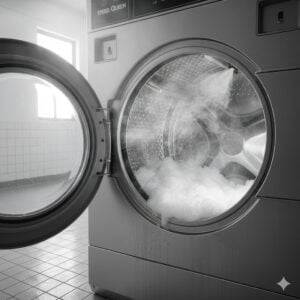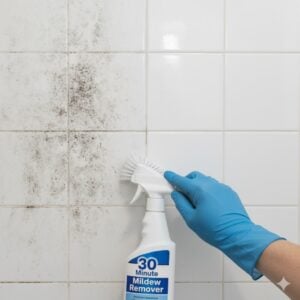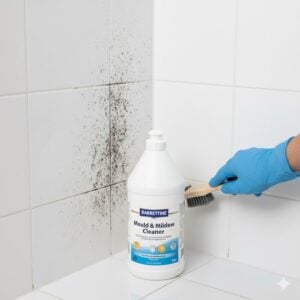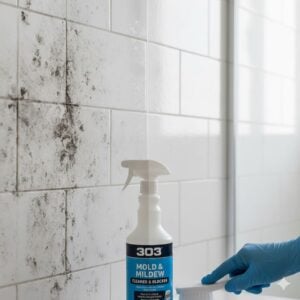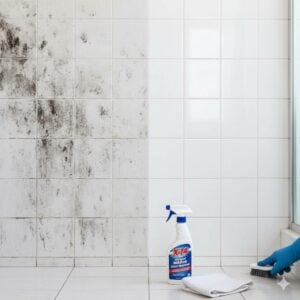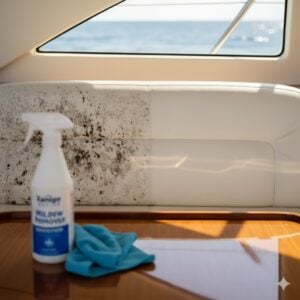Yellow mold might not be the first thing you expect to find in your home—but it’s more common than you think, especially in humid, AC-heavy regions like the UAE. It often shows up in corners of bathrooms, under kitchen sinks, behind furniture, or even on your walls and ceilings. Unlike the more widely feared black mold, yellow mold may seem less threatening at first glance—but that’s exactly why it can be dangerous. In this article, we will help you understand what yellow mold really is, why it appears, how serious it can get, and what to do about it in the unique climate of Dubai and surrounding Emirates.
Table of Contents
Toggle1. Is Yellow Mold Harmful to Your Health?
Yes, yellow mold can be harmful—especially with long-term exposure or if someone in your household has a weakened immune system, asthma, or allergies. Yellow mold isn’t a single species, but a category of mold types that appear yellowish due to spore pigmentation. Some of the most common types include:
- Serpula lacrymans – a dry rot mold that damages wood and structures
- Aspergillus – can produce mycotoxins and cause respiratory irritation
- Epicoccum nigrum – linked to allergies and asthma triggers
Exposure to yellow mold can lead to symptoms such as:
- Sneezing, runny nose, itchy eyes
- Worsened asthma attacks
- Persistent coughing or sinus infections
- Fatigue and headaches (especially with long-term exposure)
If you spot yellow mold and notice unexplained health issues, especially among children or the elderly, it’s time to take action. Don’t assume it’s “just dust” or harmless buildup—especially in closed environments like apartments or villas with limited air flow.
2. Is Mold a Common Problem in the UAE?
Absolutely. Mold is a year-round concern in UAE homes due to the combination of:
- High humidity from coastal air
- Heavy use of air conditioning, which leads to condensation
- Insulated buildings that trap moisture indoors
- Occasional water leaks or plumbing issues left unchecked
Many homes, especially older apartments or villas with poor ventilation, experience some degree of mold growth. In fact, it’s not uncommon for tenants to first notice yellow mold when moving a piece of furniture or inspecting rarely cleaned corners of the house.
We’ve treated yellow mold in everything from wardrobes and mattress backs to entire ceiling panels. It’s a silent creeper that starts slow but can escalate quickly in the UAE climate.
3. Why Does Mold Turn Yellow?
Mold can turn yellow for a few reasons, depending on species, moisture level, and growth surface. Here’s why you might be seeing yellow instead of black or green mold:
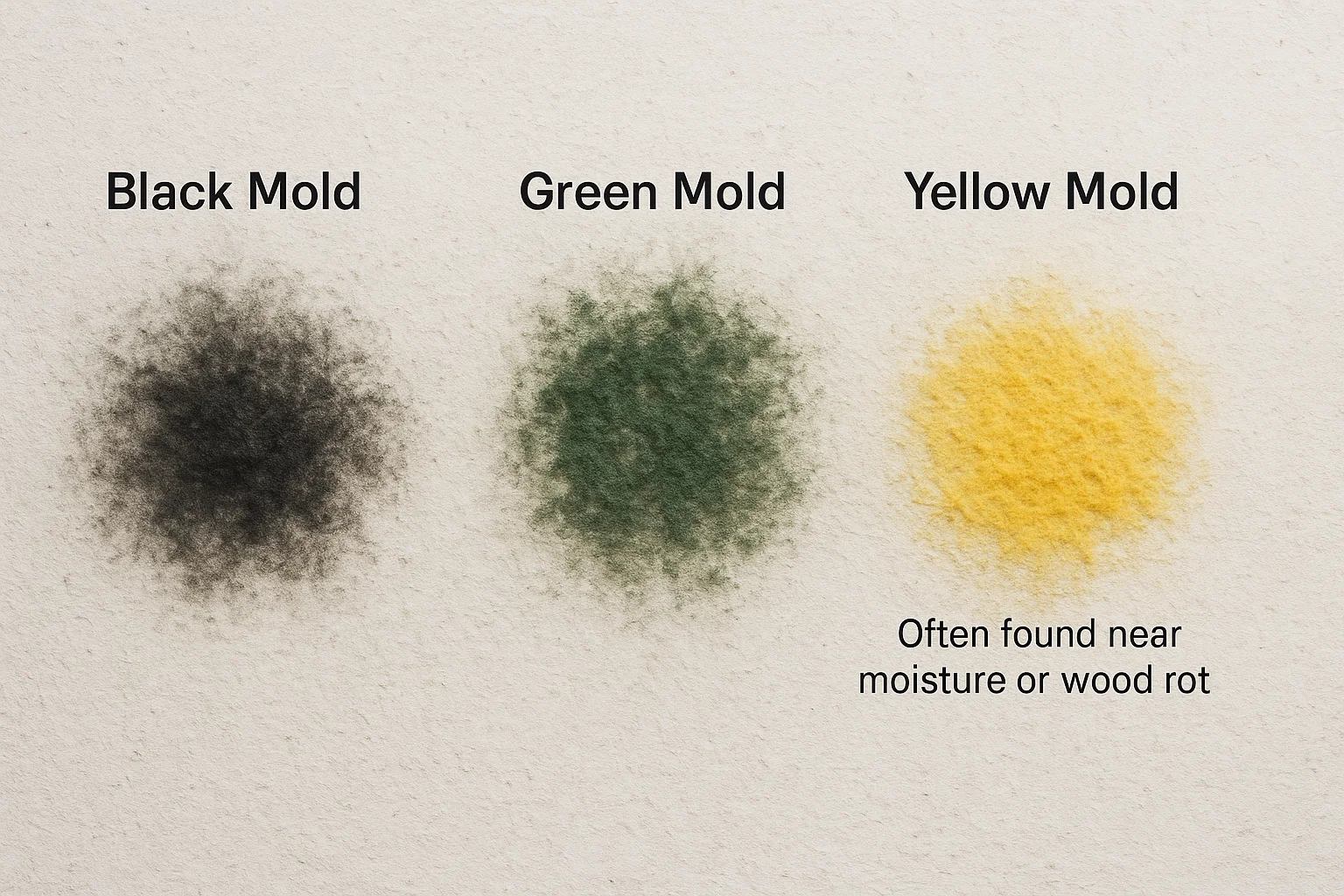
- Spore pigmentation: Certain molds produce yellow-colored spores naturally.
- Material interaction: Mold growing on wood, foam, or organic materials can take on a yellow hue.
- Moisture level: Higher humidity can influence how mold displays its color.
- Lighting: Sometimes mold that looks yellow under natural light may look brownish or green under artificial lighting.
Yellow mold may also signal the early stages of more aggressive fungal growth—especially dry rot. If you’re unsure whether what you see is just staining or actual mold, it’s safer to have it tested or removed by professionals.
4. How to Fight Yellow Mold in UAE Homes
To stop yellow mold from spreading, you need a combination of immediate action and long-term prevention. Here’s how you can tackle it:
Step 1: Identify the source of moisture
Mold can’t grow without water. Inspect your home for:
- Leaking pipes under sinks
- Condensation around AC vents
- Rainwater seepage through windows or walls
- Wet bathroom ceilings or improperly ventilated kitchens
Step 2: Clean the visible mold
If the area is small (less than 1 square meter) and the surface is non-porous (like tile), you can attempt to clean it yourself using a mix of water and white vinegar or a mild fungicidal solution. Wear gloves and a mask during cleaning.
But if the yellow mold has spread to drywall, wood, wallpaper, or your furniture—it’s best to leave it to professionals. These materials can trap spores deep inside and keep spreading mold even after surface cleaning.
Step 3: Improve ventilation
Use exhaust fans in kitchens and bathrooms, open windows whenever possible, and consider installing a dehumidifier. Even running your AC in “dry mode” for a few hours a day can help reduce indoor humidity.
Step 4: Use mold-resistant paint or coatings
Once a surface is cleaned, repaint it with a mold-proof product to prevent recurrence. This is especially useful for ceilings and corners prone to future dampness.
Need help identifying yellow mold or don’t want to risk cleaning it yourself? Just click the contact button on the right-middle of this post and we’ll take care of it.
5. How Much Does It Cost to Remove Yellow Mold in UAE?
At Bio-On, our pricing is based on area size and the complexity of the contamination. Here’s a general guide to help you understand the cost:
| Area Size | Price (AED) |
|---|---|
| Up to 1 sq.m. | 35 per sq.m. |
| 1 to 3 sq.m. | 30 per sq.m. |
| 3 to 7 sq.m. | 25 per sq.m. |
| 7 to 10 sq.m. | 20 per sq.m. |
| More than 10 sq.m. | Free inspection |
If the yellow mold requires lab testing or deeper analysis, we also offer services like:
- Air Quality Testing – AED 1000
- Surface Scraping (Microscopy) – AED 1000
- Mycotoxin or PCR Analysis – AED 1000
We always recommend starting with an inspection so you don’t waste money on solutions that don’t match the problem. You’ll get a report and plan within 24 hours.
6. How to 100% Get Rid of Mold From Your Home
To fully remove yellow mold (or any kind), you need more than just bleach or vinegar. Here’s what a complete remediation plan looks like:
- Professional inspection: Detect both visible and hidden mold using moisture meters and air tests.
- Containment: Isolate the affected area to stop spore spread during cleanup.
- HEPA vacuuming and scrubbing: Use filtered vacuums and anti-fungal solutions to deep clean all contaminated surfaces.
- Material removal: Cut out and dispose of moldy drywall, insulation, carpets, or wood if needed.
- Air purification: Run industrial-grade air scrubbers to remove airborne spores.
- Post-remediation testing: Confirm the area is safe for use again.
You don’t have to do all of this alone. That’s exactly what we do at Bio-On—so you can breathe easier knowing your home is mold-free for good.
Conclusion
Yellow mold is more than a cosmetic issue—it’s a warning sign that something in your indoor environment isn’t right. Whether it’s caused by leaks, humidity, or poor airflow, it deserves serious attention, especially in the UAE where mold grows fast in sealed-up buildings.
We’ve helped hundreds of Dubai residents restore their homes, improve indoor air quality, and protect their health by tackling mold before it spreads out of control. If you see yellow patches on your wall or smell musty odors, don’t wait. Click the contact button on the right-middle of this post and we’ll respond quickly to schedule a visit.
Yellow mold may seem like a small issue—but handled the right way, you can stop it before it becomes a costly health hazard.







